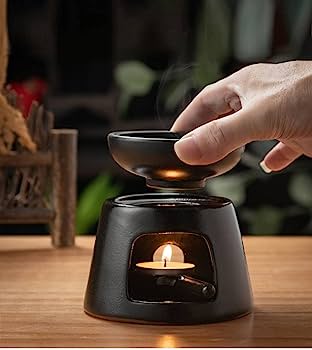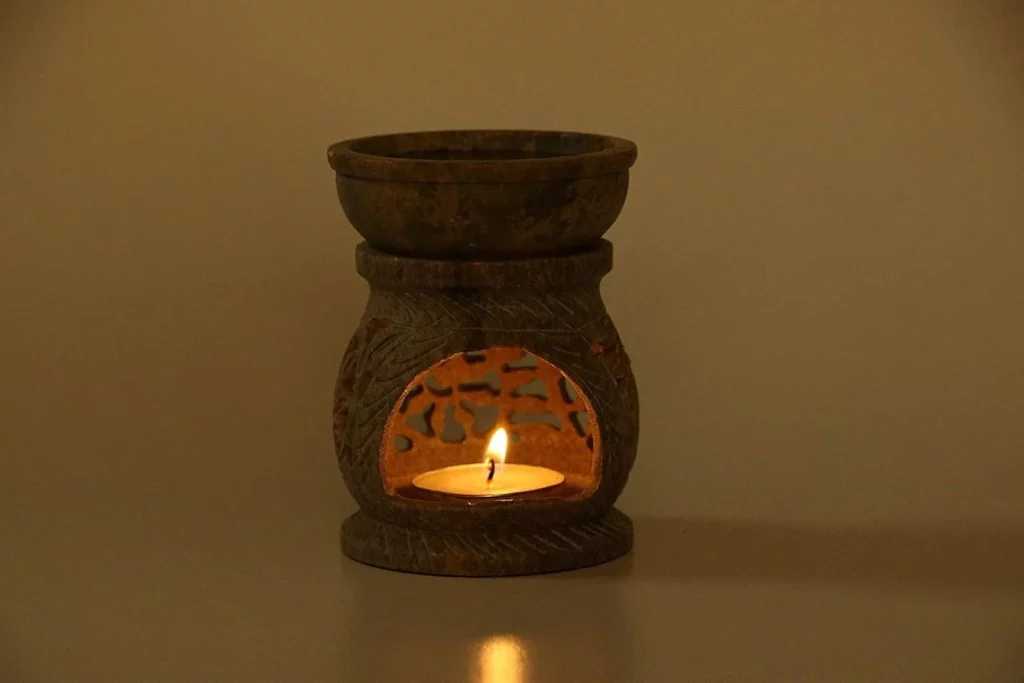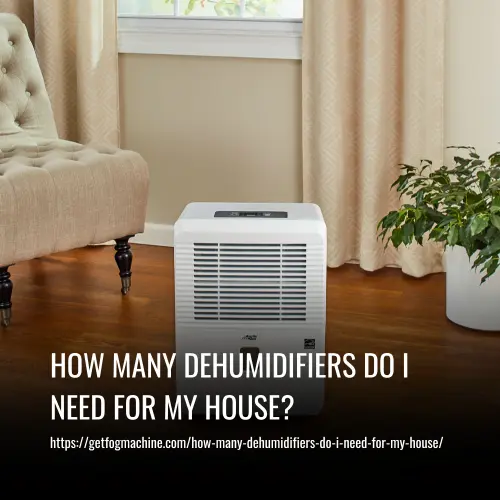How to Use an Oil Burner: A Step-by-Step Guide
This post contains affiliate links. As an Amazon Associate, we earn from qualifying purchases.
To use an oil burner, start by filling the bowl at the top of the burner with warm water. Then, add 3-5 drops of your chosen essential oil to the water. Next, place a lit tea light candle underneath the bowl to heat the water and oil mixture. As the water and oil evaporate, the delightful aroma of the essential oils will fill the room, creating a refreshing and soothing atmosphere.
Remember to keep safety precautions in mind, such as placing the oil burner on a heat-resistant surface and keeping it out of the reach of children and pets. Enjoy the wonderful aromas and the health benefits of aromatherapy with your oil burner for about 30 to 60 minutes at a time, adjusting the amount of oil used to suit your personal preferences.

What is an Oil Burner
An oil burner is a popular method of fragrancing the home. It is an easy-to-use and inexpensive device that utilizes fragrance oils or wax melts to release their scent. There are two types of oil burners: one that uses a tealight candle placed below the reservoir, and another that uses a light bulb in electric oil burners.
This makes oil burners a versatile option for home fragrance, as they can be used with fragrance oils, essential oils, or wax melts. They offer a range of scents and refreshing aromas, providing a wonderful ambiance in any space.
How to Use an Oil Burner
To enjoy the wonderful aromas and health benefits of aromatherapy, using an oil burner is a simple and effective method. Here is a step-by-step guide on how to use an oil burner:
1. Prepare your oil burner
Before you begin, ensure that your oil burner is in good condition, without any cracks or chips. Place it on a heat-resistant surface, away from flammable materials and draughts.
2. Choose your fragrance
Decide whether you want to use fragrance oils or wax melts in your oil burner. If using fragrance oils, you will need water to dilute the oil. For wax melts, follow the instructions on the packaging for the recommended quantity.
3. Prepare the oil burner
If using fragrance oils, fill the reservoir of the oil burner two-thirds full with water. Add a few drops of the fragrance oil into the water, ensuring there are no spills. If using wax melts, place the recommended quantity into the reservoir.
4. Insert the tea light candle
Insert a tea light candle into the base of the oil burner and light it carefully. The heat from the candle will now start to release the fragrance above.
5. Monitor and extinguish
Keep an eye on the oil burner and ensure the water level doesn’t become too low. If it does, extinguish the candle and refill the water reservoir before relighting.
6. Cooling and moving
After use, allow the oil burner to cool completely before moving it. This will prevent any accidents or burns.
Safety Precautions When Using an Oil Burner
When using an oil burner, it is important to prioritize safety to prevent accidents and ensure a pleasant and worry-free aromatherapy experience. Here are some key safety precautions to keep in mind:
1. Prepare the environment
Before lighting the oil burner, ensure that the area around it is clear of any flammable materials such as curtains, furniture, or paper. This will reduce the risk of accidental fires.
2. Keep children away
To prevent burns or accidents, it is crucial to keep children away from the oil burner at all times. Children may be tempted to touch or play with the burning flame, so it is best to keep them at a safe distance.
3. Never leave unattended
Always remember to never leave a lit candle unattended. It is important to extinguish the flame before leaving the room or going to sleep to avoid any potential fire hazards.
4. Monitor the water level
If using an oil burner with water, make sure to monitor the water level throughout the burning process. If the water level becomes too low, the oil burner may overheat or the glass may crack. If necessary, extinguish the candle and refill the water reservoir before relighting.
5. Allow for cooling time
After each use, allow the oil burner to cool down completely before moving it. Hot glass or wax can cause burns if handled when still hot. Take caution and ensure the burner is cool to the touch before attempting to move it.

Different Types of Oils to Use in an Oil Burner
When it comes to using an oil burner, choosing the right type of oil is crucial to achieve the desired results. Here are the different types of oils you can use in an oil burner:
1. Essential Oils for Aromatherapy
Essential oils are derived from plants and are commonly used for their therapeutic properties. They can be used to create a pleasant aroma in your home or office while promoting relaxation and improving mood. Popular essential oils for aromatherapy include lavender, peppermint, eucalyptus, tea tree, lemon balm, and rosemary.
2. Fragrance Oils for Scented Candles and Potpourri
Fragrance oils are synthetic scents that mimic natural aromas such as flowers or fruits. While they are often used to scent candles or potpourri, they can also be used in an oil burner to add a pleasant smell to any room. Some popular fragrance oils include jasmine, vanilla bean, cinnamon spice, citrus blossom, ocean breeze, and tropical fruit punch.
3. Carrier Oils for Dilution
Carrier oils are vegetable-based liquids that are used to dilute essential oils. They are important for preventing skin irritation when applying essential oils topically or inhaling them through an oil burner diffuser device. Common carrier oils include almond oil, jojoba oil, coconut oil, olive oil, and avocado oil.
Using the appropriate type of oil in an oil burner is essential to ensure a safe and effective aromatherapy experience.
Advantages of Using an Oil Burner
Oil burners are a popular choice for adding ambiance and scent to any room. They offer several advantages and benefits:
1. Cost-effective
Oil burners are relatively inexpensive and provide a cost-effective way to enjoy the benefits of aromatherapy or create a pleasant scent in your space.
2. Versatility
Oil burners can be used with a variety of different oils, including essential oils and fragrance oils, allowing you to customize the scent according to your preferences.
3. Therapeutic benefits
Aromatherapy with essential oils can promote relaxation, reduce stress, and improve mood. By using an oil burner, you can easily enjoy the therapeutic benefits of essential oils in your own home.
4. Ease of use
Oil burners are simple and easy to use. All you need to do is fill the bowl with water, add a few drops of oil, and light a tea light candle or use an electric diffuser. The heat from the candle or electric diffuser then releases the aroma into the air.

Disadvantages of Using an Oil Burner
Despite their advantages, there are also a few disadvantages to consider when using an oil burner:
1. Safety concerns
Oil burners involve an open flame, so it’s important to exercise caution and never leave them unattended. Proper monitoring is necessary to prevent accidents or fires.
2. Cleaning and maintenance
Over time, residue may build up inside the bowl, which can be challenging to clean thoroughly. Specialized tools or cleaning solutions may be required for a thorough cleaning.
3. Allergic reactions
While essential oils can provide a range of health benefits, some individuals may be sensitive or allergic to certain oils. It’s important to test oils on a small area of skin before using them in an oil burner to avoid any adverse reactions.
Overall, using an oil burner can enhance your space with wonderful aromas and provide numerous health benefits through aromatherapy.
Cleaning and Maintenance Tips for Your Oil Burner
Properly cleaning and maintaining your oil burner is crucial for its optimal performance and longevity. Here are some tips to help you keep your oil burner in top condition:
1. Tips for Maintaining Your Oil Burner
To maintain optimal performance, regularly clean out any residue in between uses. Wipe down the inside surfaces with warm soapy water and dry thoroughly before refilling. Additionally, replace parts like wicks every few months, following the manufacturer’s guidelines.
2. Cleaning the Wick and Bowl of Your Oil Burner
To clean the wick, use a damp cloth or paper towel to wipe away any excess residue. Avoid getting the wick too wet, as this can damage it. After wiping down the wick, securely fasten it back into its holder.
For cleaning the bowl of your oil burner, use a mild detergent and warm water solution. Gently scrub the surface of the bowl with a soft brush or sponge to remove any dirt. Rinse thoroughly with warm water and dry completely with a soft cloth or paper towel.
3. Replacing Parts on Your Oil Burner
Certain parts of your oil burner may need replacing over time due to regular wear and tear. Common replacement parts include new wicks, bowls, burners, filters, nozzles, and other components. These parts are easily available online or at hardware stores. However, it is recommended to consult with an expert before attempting any repairs, as some repairs may require specialized tools.
4. Storing and Safety Precautions
When storing your oil burner, ensure that all components are dry before packing them away. Avoid storing flammable items, such as aerosol cans or matches, near your oil burner to prevent potential ignition.
By following these cleaning and maintenance tips, you can ensure that your oil burner remains efficient, safe, and enjoyable for years to come.
FAQs
Burning an oil burner should be done in short intervals of 15 to 20 minutes at a time. It is important to monitor the burner’s temperature and never allow it to exceed 250°F (121°C). If you are using essential oils, they should not be burned for more than 30 minutes at a time. When finished, turn off the heat source and allow the oil burner to cool before storing it away. Never leave an oil burner unattended while burning or heating up, as this could lead to a fire hazard.
To use an oil burner, find an oil you like and place 3-5 drops of the oil together with some water into the top of the burner until it’s 1/2-3/4 of the way full. Place the burner in a safe location, away from children, pets, or burning hazards. Remember to always follow safety measures and use oil burners according to personal preferences and guidelines.
An oil burner is a device that uses heat to vaporize essential oils, releasing them into the air. It consists of a reservoir for holding the oil, an electric heating element, and a fan to disperse the scent. The heating element warms up the oil until it evaporates and disperses into the room as a fine mist or vapor. This process helps to quickly fill any space with your desired aroma while also providing therapeutic benefits such as stress relief and improved sleep quality.
Burning essential oils at home is easy and safe when done correctly. To start, you’ll need an oil burner or diffuser. Place a few drops of your chosen essential oil into the bowl of the burner/diffuser and light a tea light candle underneath it. The heat from the candle will cause the essential oils to evaporate, releasing their aroma into the air. Make sure to keep an eye on your burner/diffuser, as some materials may be flammable if left unattended for too long. Additionally, always use caution when handling open flames in order to avoid any accidents or injuries.
The best oil burner fragrances to use are 12ml fragrance oils or pure essential oils, diluted in water. Wax melts can also be used in oil burners. Do not use lamp fragrances, reed diffuser refills, or any other types of fragrant liquid in an oil burner.
Oil burners are a reusable home fragrance method that lasts for many, many uses! Simply refill with new fragrance oil or wax melts once your supply runs out.
Oil burners are safe to use as long as you read the instructions that come with the product and follow the guidance. Before use, always check your burner for cracks or chips that may be affected by the heat of the tea light. If any damage is found, discontinue use. Like any home fragrance method involving an open flame, oil burners should not be left unattended and should be kept out of reach of children and pets while in use.
Yes, oil burners can also be used to heat wax melts. Place the recommended quantity of wax melts in the reservoir of the burner, then place a tea light in the recess below and light it. The heat from the flame will melt the wax and release the fragrance.
Conclusion
An oil burner can be a wonderful addition to your home for creating a soothing and aromatic atmosphere. By following the proper safety measures and using the recommended amount of oil, you can enjoy the many benefits of aromatherapy without any risks. Remember to never leave your burner unattended while in use and to always allow it to cool before storing it away.
Whether you prefer a traditional ceramic or glass oil burner or a modern electric diffuser, there are many options available to suit your personal preferences. Experiment with different essential oil blends and scents to find the perfect combination that helps you relax, unwind, and improve your overall well-being. Happy oil burning!






